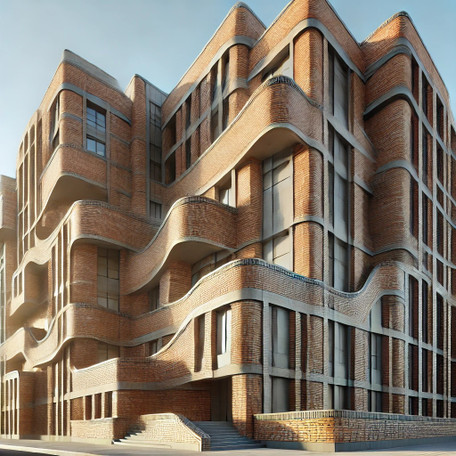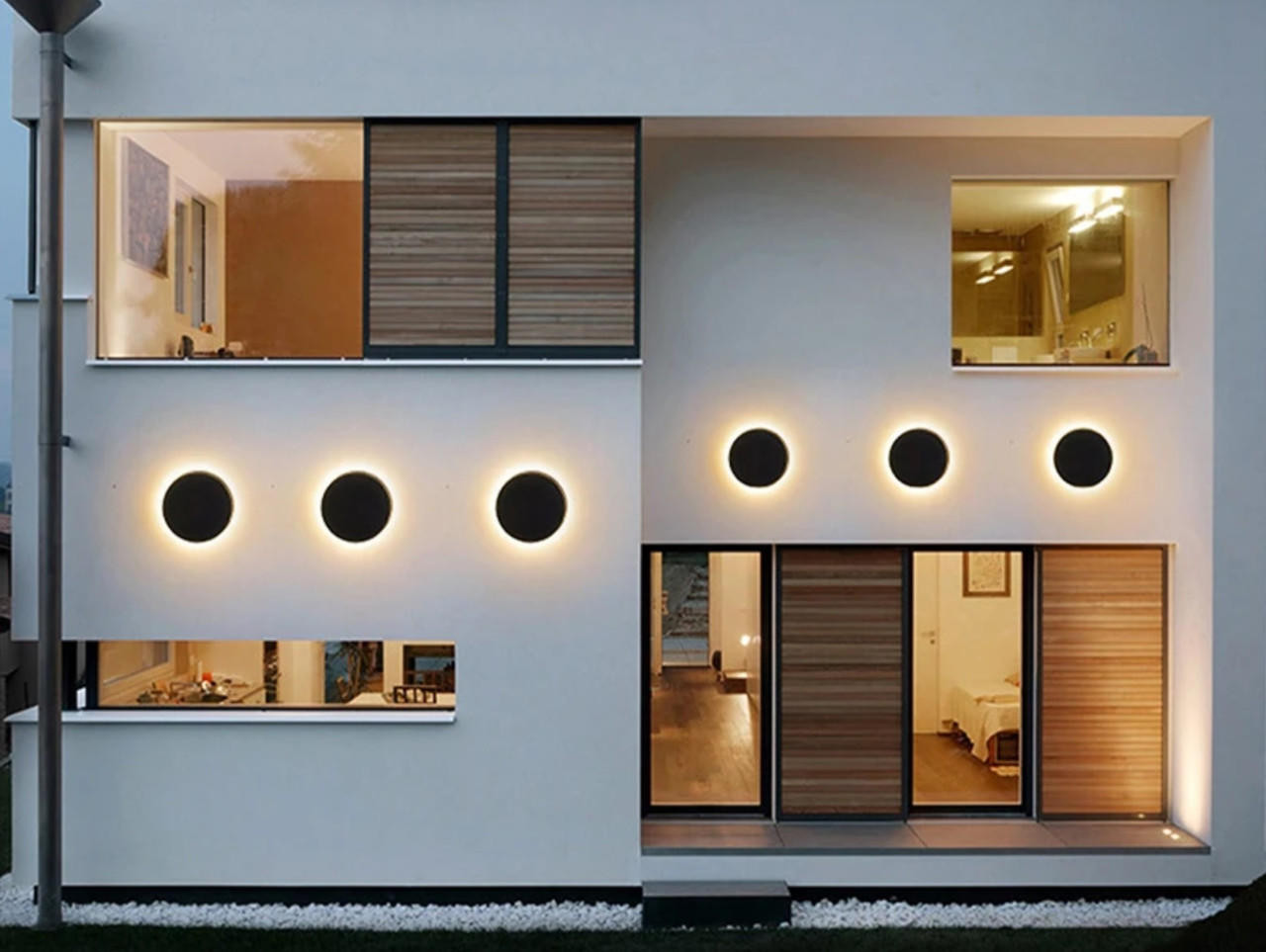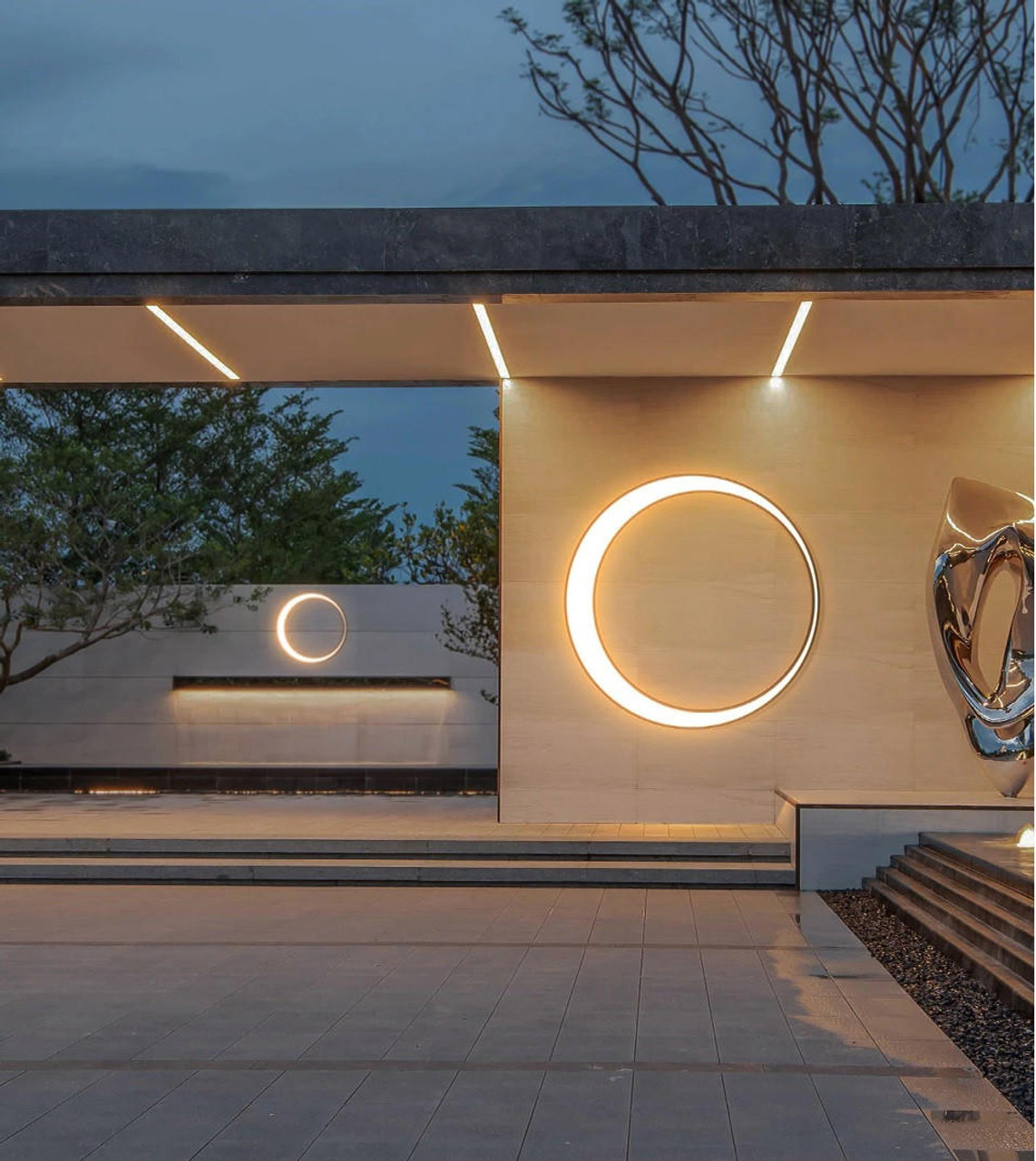Modern Masonry Construction - Technologically Advanced Brick Buildings Redefining Tradition
20th Aug 2024
Modern Masonry: Technologically Advanced Brick Buildings Redefining Tradition
Brick has been a cornerstone of architectural design for thousands of years, shaping the aesthetic and structural integrity of buildings across cultures and eras. From the ancient ziggurats of Mesopotamia to the Gothic cathedrals of Europe, brickwork has remained a constant, valued for its durability, versatility, and timeless appeal. However, as with all long-standing traditions, the world of masonry is undergoing a transformation. Thanks to innovative fabrication techniques and advances in technology, brick construction is entering a new era, one that pushes the boundaries of what was once thought possible.
In this blog, we'll explore how modern masonry is redefining tradition, highlighting the cutting-edge technologies and design approaches that are reshaping the landscape of brick architecture. We’ll delve into specific examples of buildings that exemplify this trend and discuss how these advancements are not only preserving the relevance of brick but also enhancing its capabilities in the 21st century.
The Timeless Appeal of Brick
Before diving into the modern innovations, it’s important to understand why brick has remained a favored material for millennia. The appeal of brick lies in its unique combination of aesthetic and practical qualities:
- Durability: Brick is one of the most durable building materials available, capable of withstanding extreme weather conditions, fire, and the passage of time. Many ancient structures made of brick are still standing today, a testament to its longevity.
- Thermal Mass: Brick’s ability to absorb and store heat makes it an excellent material for energy-efficient buildings. It helps regulate indoor temperatures by absorbing heat during the day and releasing it slowly as temperatures drop, reducing the need for artificial heating and cooling.
- Aesthetic Versatility: Brick offers a wide range of aesthetic possibilities, from the rich, earthy tones of traditional red brick to modern, sleek finishes. Its texture and color can be tailored to suit various architectural styles, from rustic and traditional to contemporary and industrial.
- Sustainability: Brick is often made from natural, abundant materials such as clay and shale, and can be recycled or repurposed at the end of a building's life cycle, making it a sustainable choice for environmentally-conscious construction.
Despite these enduring qualities, brick has often been associated with traditional or even conservative architecture. However, this perception is rapidly changing as architects and builders embrace new technologies that expand the possibilities of brickwork, making it a material that is not only timeless but also cutting-edge.
The Role of Technology in Modern Masonry
The resurgence of brick in contemporary architecture is largely due to the integration of advanced technologies in both the design and construction processes. These technologies are enabling architects to push the boundaries of what can be achieved with brick, resulting in structures that are not only functional but also visually stunning and structurally innovative.
1. Digital Design and Parametric Modeling
One of the most significant advancements in modern masonry is the use of digital design tools, particularly parametric modeling. Parametric modeling allows architects to create complex, intricate designs that would have been impossible to conceive or construct with traditional methods.
- Complex Geometries: Parametric modeling enables the design of buildings with complex, non-linear geometries that challenge the conventional use of brick. Curved walls, twisting facades, and undulating surfaces can now be designed with precision, ensuring that each brick fits perfectly into the overall structure.
- Customization: With digital design, bricks can be customized to specific shapes, sizes, and textures to achieve the desired aesthetic effect. This level of customization was previously unimaginable, allowing architects to explore new forms and patterns.
- Efficiency: These tools also enhance the efficiency of the design process by automating repetitive tasks and optimizing the placement of bricks. This results in not only faster design iterations but also more accurate construction outcomes.
A prime example of parametric design in brick architecture is the Mason Lane Farm in Kentucky, USA. The farm’s equipment shed features a stunning, perforated brick facade that creates a dynamic interplay of light and shadow. The pattern of the brickwork was generated using parametric design software, which allowed the architects to explore various configurations before settling on the final design. The result is a building that is both functional and visually engaging, demonstrating how digital tools can bring new life to brick construction.
2. Robotic Bricklaying
Another groundbreaking development in modern masonry is the advent of robotic bricklaying. Robots are increasingly being used on construction sites to perform tasks that were traditionally done by human workers. This technology is particularly impactful in bricklaying, where precision and speed are crucial.
- Precision and Consistency: Robotic bricklaying machines can place bricks with a level of precision and consistency that is difficult to achieve manually. This is especially important for complex designs that require exact alignment and spacing of bricks.
- Speed and Efficiency: Robots can work around the clock without fatigue, significantly speeding up the construction process. They can lay bricks much faster than human workers, reducing labor costs and construction timelines.
- Complex Patterns: With robotic bricklaying, it is possible to create intricate patterns and designs that would be labor-intensive and time-consuming to achieve by hand. Robots can be programmed to lay bricks in specific sequences, enabling the creation of detailed facades and decorative elements.
The Facade of the University of Amsterdam is an example of robotic bricklaying in action. The building features a highly complex brick facade with a woven pattern that would have been extremely challenging to construct manually. By using robotic technology, the architects were able to realize their vision with a level of detail and precision that enhances the overall impact of the design.
3. 3D Printing with Brick
3D printing is another technology that is making waves in the world of brick architecture. While 3D printing is often associated with materials like plastic or metal, recent advancements have made it possible to print with clay and other brick-like materials.
- Customization: 3D printing allows for the creation of custom bricks with unique shapes, textures, and internal structures. These bricks can be designed to interlock in specific ways, enhancing the stability and strength of the structure.
- Complex Structures: With 3D printing, it is possible to create structures that would be difficult or impossible to achieve with traditional bricklaying methods. This includes intricate latticework, hollow structures, and other complex geometries.
- Sustainability: 3D printing can also reduce waste by using only the exact amount of material needed for each brick. Additionally, it allows for the use of recycled materials, making it a more sustainable option for construction.
One notable example of 3D printing in brick construction is the Brick Pavilion at the University of Hong Kong. This pavilion was created using 3D-printed bricks that were designed to interlock in a specific pattern, creating a visually striking and structurally sound building. The project demonstrates how 3D printing can be used to push the boundaries of traditional brick architecture, opening up new possibilities for design and construction.
4. Sustainable Brick Manufacturing
As environmental concerns continue to grow, the construction industry is under increasing pressure to adopt more sustainable practices. This has led to the development of new methods for manufacturing bricks that are both eco-friendly and energy-efficient.
- Recycled Materials: Modern brick manufacturers are increasingly using recycled materials, such as crushed glass, fly ash, and reclaimed clay, in their production processes. These materials not only reduce waste but also lower the energy required to produce bricks.
- Low-Carbon Bricks: Innovations in brick manufacturing have led to the creation of low-carbon bricks, which are produced using less energy and generate fewer emissions. These bricks are often made using alternative materials, such as organic binders or geopolymers, that require less heat to cure.
- Water Conservation: New technologies are also being used to reduce water consumption in brick production. This includes closed-loop systems that recycle water within the manufacturing process, minimizing the overall environmental impact.
The Hemp Brick House in the UK is an example of sustainable brick manufacturing in practice. The house is constructed using bricks made from a mixture of hemp fibers and lime, which are both renewable resources. These bricks are not only sustainable but also provide excellent insulation, reducing the need for artificial heating and cooling. The project showcases how modern masonry can be both innovative and environmentally responsible.
5. Integration of Smart Technologies
The integration of smart technologies into brick architecture is another exciting development in modern masonry. These technologies are transforming buildings into more intelligent and responsive environments.
- Energy Efficiency: Smart bricks embedded with sensors can monitor the thermal performance of a building, providing real-time data on temperature, humidity, and energy consumption. This information can be used to optimize the building's energy efficiency, reducing costs and environmental impact.
- Structural Health Monitoring: Smart bricks can also be equipped with sensors that detect stress, strain, and other structural changes. This allows for continuous monitoring of the building’s integrity, enabling early detection of potential issues before they become serious problems.
- Interactive Facades: Some modern buildings feature interactive brick facades that can change in response to environmental conditions. For example, bricks embedded with LED lights can create dynamic displays that vary according to the time of day, weather, or other factors.
The Media-TIC Building in Barcelona is a prime example of a structure that incorporates smart technology into its design. The building’s facade features smart materials that regulate the interior temperature by opening and closing in response to sunlight. This innovative approach not only enhances the building’s energy efficiency but also creates a visually dynamic and engaging exterior.
6. Reviving Traditional Techniques with Modern Methods
While much of the focus in modern masonry is on new technologies, there is also a growing trend of reviving traditional bricklaying techniques using modern methods. This approach blends the best of both worlds, combining the craftsmanship and aesthetic appeal of traditional masonry with the efficiency and precision of contemporary technology.
- Handcrafted Bricks: Some architects are choosing to work with handcrafted bricks that are produced using traditional methods but laid using modern techniques. This results in buildings that have the warmth and character of traditional brickwork but with the precision and innovation of modern construction.
- Restoration and Preservation: Modern technologies are also being used to restore and preserve historic brick buildings. Techniques such as laser scanning, 3D modeling, and advanced materials analysis allow for the accurate replication of original brickwork, ensuring that historic structures can be preserved for future generations.
The St. Pancras Renaissance Hotel in London is an example of a project that blends traditional and modern techniques. The restoration of this historic building involved the careful replication of the original brickwork using bricks that were handmade to match the originals. Modern methods were used to ensure that the new bricks fit seamlessly into the existing structure, preserving the building’s historic character while enhancing its durability.
The Future of Brick Architecture
As we look to the future, it’s clear that brick will continue to play a vital role in architecture. However, the way we use and think about brick is evolving. The advancements in digital design, robotic construction, 3D printing, sustainability, smart technologies, and the revival of traditional techniques are all contributing to a new era of brick architecture.
This new era is characterized by buildings that are not only structurally sound and aesthetically pleasing but also environmentally responsible, energy-efficient, and technologically advanced. Architects and builders are no longer constrained by the limitations of traditional brickwork. Instead, they are free to explore new forms, patterns, and applications that were once unimaginable.
Embracing Innovation
To fully embrace the potential of modern masonry, the construction industry must continue to invest in research and development. This includes exploring new materials, refining fabrication techniques, and pushing the boundaries of design. Collaboration between architects, engineers, manufacturers, and technologists will be key to driving innovation in brick construction.
Preserving Tradition
At the same time, it’s important not to lose sight of the rich tradition of brick masonry. The techniques and craftsmanship that have been developed over centuries are valuable cultural and architectural assets. By integrating these traditional methods with modern technology, we can create buildings that honor the past while looking to the future.
Conclusion
Modern masonry is a field in flux, where tradition meets technology in exciting and innovative ways. As architects and builders continue to explore the possibilities of advanced brick construction, we can expect to see more buildings that challenge our perceptions of what brick architecture can be.
From digitally designed facades and robotically laid bricks to 3D-printed structures and sustainable materials, the future of brick architecture is bright. By redefining the boundaries of traditional brickwork, we are not only preserving the relevance of this ancient material but also enhancing its potential to shape the built environment for generations to come.






